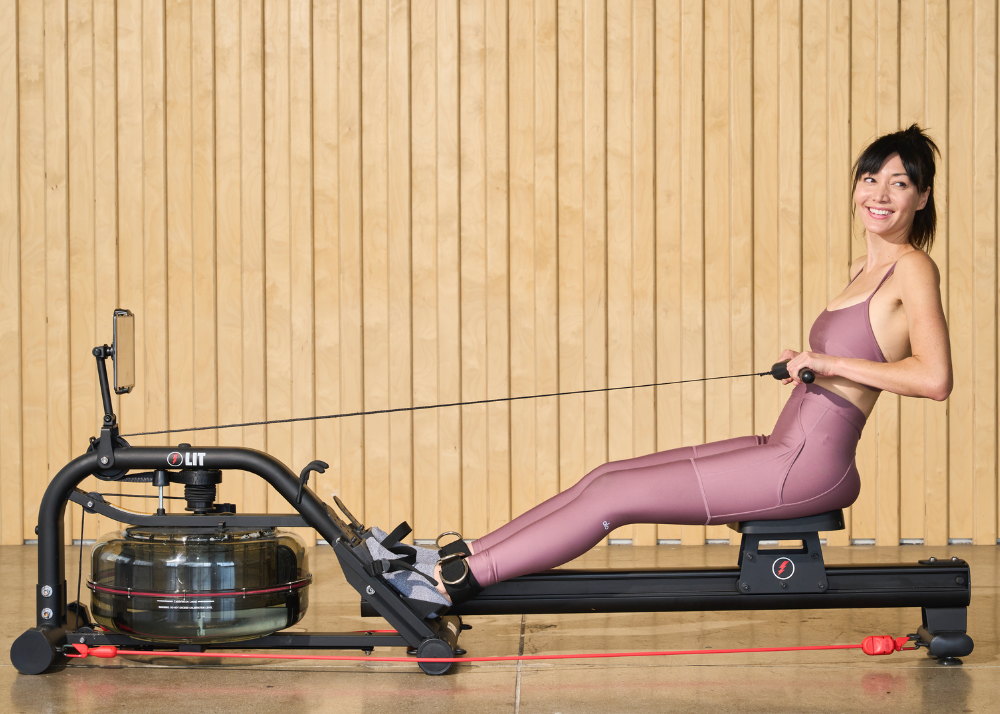This is why we recommend stretching with resistance bands for a comfortable experience. As such, stretching can be challenging and even painful for some people. However, resistance bands can help ease into stretches without pain. The versatility of these elastic bands makes them suitable for stretching your entire body, from your neck to your calves.
Let's explore stretch band exercises for a flexible body.
Resistance Band Stretches For Upper Body
1. Chest Stretch
- Stand with your feet shoulder-width apart, and hold the resistance band with both hands, palms facing down.
- Extend your arms out in front of you straight, keeping them at shoulder height.
- Gently pull the band apart as you squeeze your shoulder blades together.
- You should feel the stretch in your chest and front shoulders.
- Do 20-30 reps for 2-3 sets.
2. Side Stretch
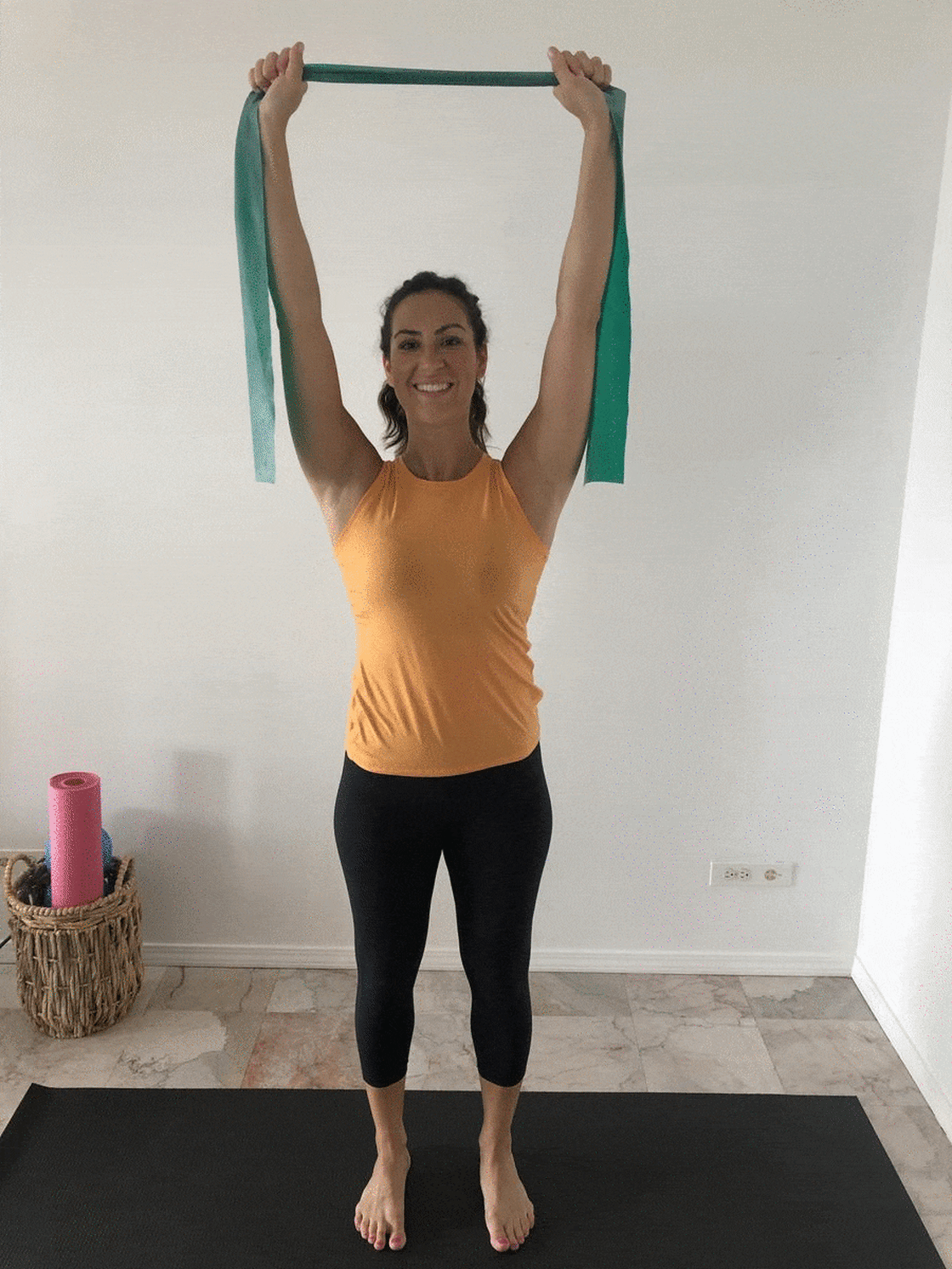
- Stand straight and hold each end of the resistance band in your hands.
- Raise your hands straight up overhead.
- Pull the band apart to create tension and maintain your hands shoulder-width apart.
- Lean slowly to one side until you feel the stretch in your side.
- Hold the position for 30 seconds before switching sides.
- Do 15 reps in 2 sets.
3. Neck Stretch
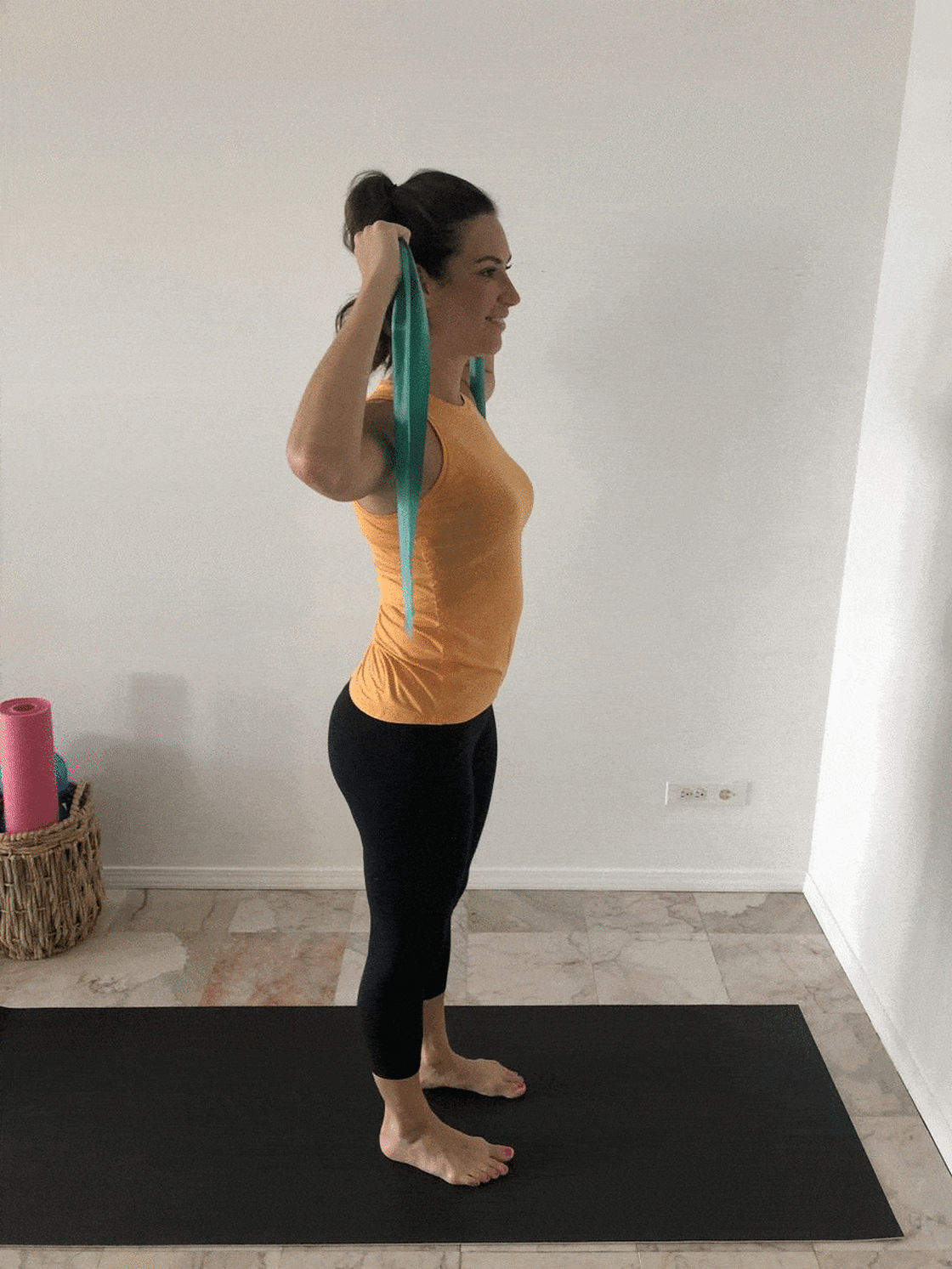
- Stand up straight, holding one end of the band in each hand with the middle of the band placed at the back of the head.
- Tuck your chin towards your chest as you slowly pull the ends of the band down, stretching the back of the neck.
- Hold this position for 10 seconds, then release back to starting position.
- Do 4 reps.
Lower Body Stretch Band Exercises
1. Hamstring Stretch
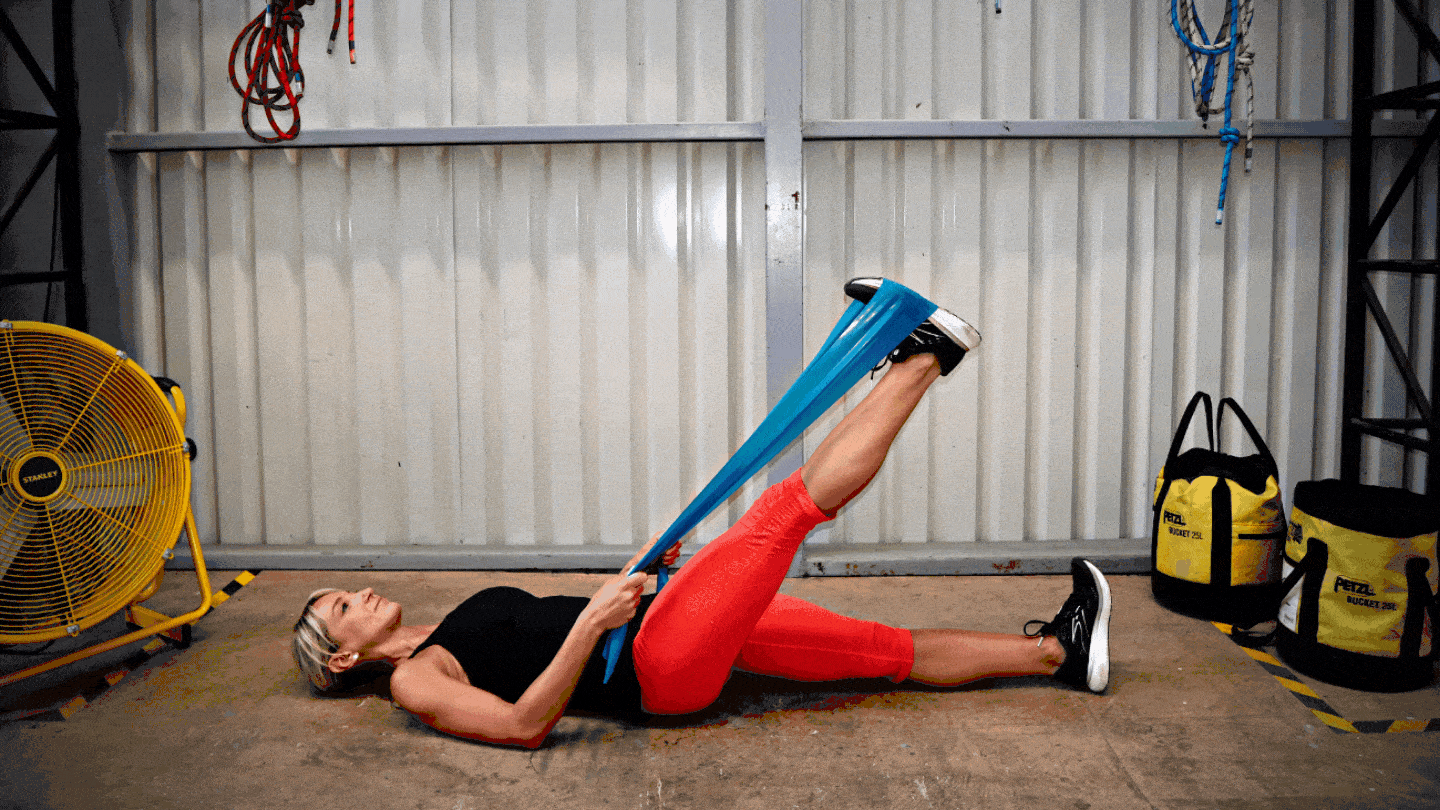
- Lie straight on your back; the resistance band looped to the right foot.
- Hold each end of the resistance band; hold the band closer to the foot for more challenge.
- Keeping the left leg resting on the ground, straighten your right leg towards the ceiling until you feel your hamstring stretching.
- Flex the foot.
- Hold the position for 30 seconds before switching sides.
- Do 10 reps.
2. Inner Thigh Stretch

- Lie down on your back, and loop the resistance band around one foot.
- Straighten your banded foot towards the ceiling with your unbanded leg bent with your foot on the floor.
- Slowly open the banded leg on the side to stretch your inner thigh fully.
- Hold for 30 seconds before switching sides.
- Do 8-10 reps.
3. Calf Stretch
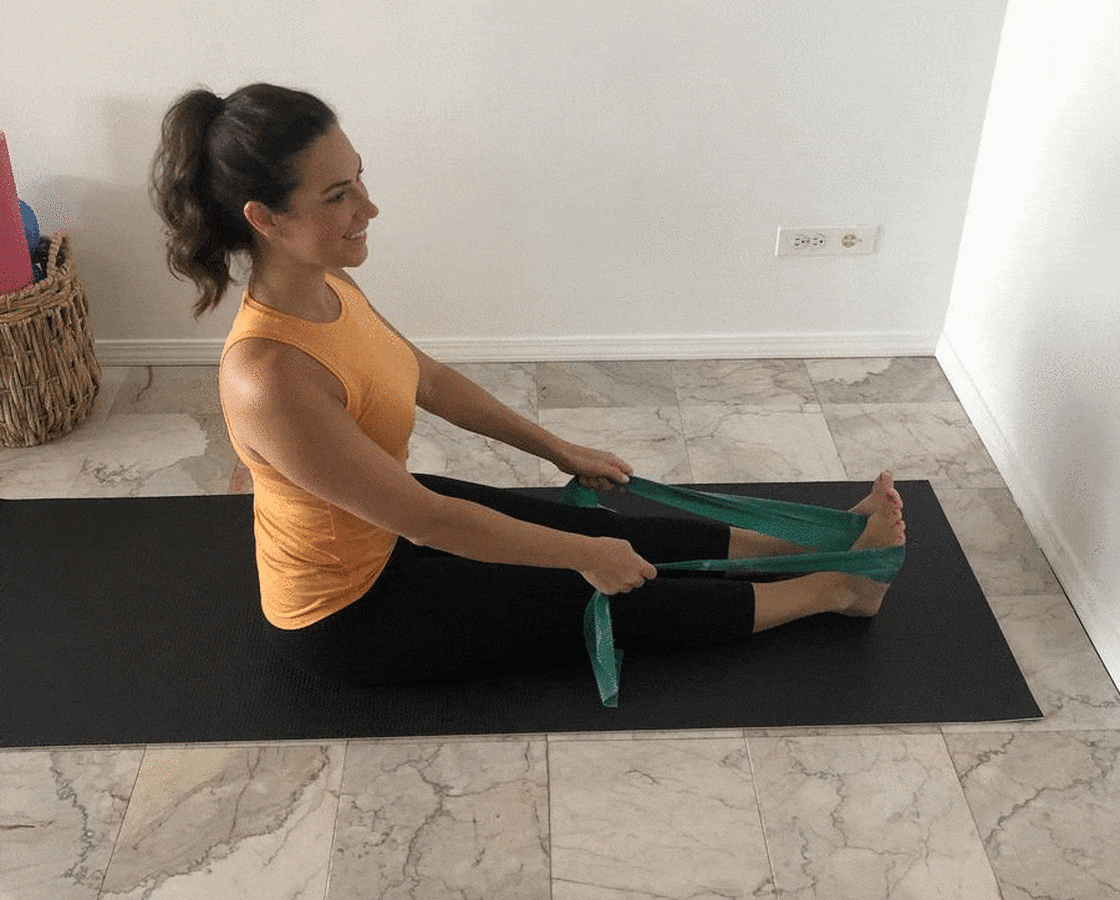
- Sit on the floor, legs stretched straight.
- Loop the band around the right foot and hold the ends in each hand.
- Pull the band towards you in a controlled motion to flex your foot.
- Once fully flexed, hold the position for 30 seconds before switching sides.
- Do 10-15 reps for 2 sets.
Full Body Resistance Band Stretch
1. Around the World Pass Through

- Hold the resistance hand with your hands shoulder-width apart with palms in.
- Hinge bending your upper body down.
- Slowly rotate to the side, then up, and as you reach the standing position, pass the band over your head and behind your back.
- Once the band reaches your glutes, bring it back up and over your head while rotating down to the side, back into a hinge position.
- After you reach the starting position, rotate to the opposite side.
- Do 5 reps on each side.
How to Perform Resistance Band Stretches Properly?
Performing resistance band stretches appropriately is crucial to ensure effectiveness and reduce the risk of injury. Here are some general guidelines to follow:- When stretching with bands, it's essential to do it properly for effectiveness and to reduce the risk of injury. A light cardio warm-up is necessary, and so is the choice of the correct resistance band.
- You must maintain proper posture and alignment to perform a stretch band workout properly. You must engage your core muscles, standing tall or sitting up straight. Keep your shoulders relaxed and down, and avoid hunching or slouching. Also, keep a neutral spine position to prevent injuries.
- Throughout stretching, move slowly and in a controlled manner. Avoid jerking or bouncing motions for pain-free stretching. Focus on relaxing the muscles being stretched and allowing them to elongate gradually.
Choosing The Right Band For Stretching
Resistance bands are available in different resistance levels, materials, and types. Selection must be based on individual fitness levels and goals. Beginners should pick light resistance bands; others can start with medium-strength resistance bands for stretch band exercises. Latex resistance bands perform better, and loop bands are ideal for stretching exercises. Choose longer and thicker bands as they offer more versatility in performing a variety of stretches.

LIT AXIS resistance bands are a new-age alternative to traditional resistance bands. Empowered by the built-in Bluetooth sensors, LIT AXIS transforms into a fully connected fitness system. It can accurately monitor your reps, time under tension, load, and performance. To ensure proper form and technique, it monitors any muscle imbalance. The LIT Method app provides all metrics to achieve optimal results and minimize the risk of injury. And if you need clarification on a specific stretch or exercise, you can connect to a fitness professional through the app.
Tips for stretching safely
- Select the appropriate resistance band level matching your fitness level.
- Start with low resistance and gradually progress to higher levels.
- Focus on proper body alignment and maintain form and technique. Always avoid overstretching or forcing movements.
Conclusion
Stretching with resistance bands is the easiest method to improve the flexibility of your muscles while increasing muscle activation. You must maintain proper form and technique and choose the correct resistance band for a stretch band workout.
LIT AXIS resistance bands are ideal for beginners and experienced fitness enthusiasts, offering an accessible and more thoughtful way to enhance flexibility and strength.
Frequently Asked Questions
Are resistance band stretches suitable for beginners?
Yes, resistance band stretches help beginners ease into flexibility with gradual progression reducing pain or risk of injury.
Can resistance band stretch replace traditional weightlifting exercises?
While resistance band stretches can greatly complement traditional weightlifting exercises, but cannot entirely replace them.
How often should I perform resistance band stretches?
Beginners should start stretching with resistance bands twice a week. As they gain flexibility and strength, they can perform resistance band stretches 3 times per week. Experience fitness enthusiasts can do them thrice a week.
Can resistance band stretch help with back pain?
By promoting flexibility and strength of the back supporting muscles, resistance band stretches can assist in alleviating back pain.
Are there any specific precautions for pregnant women using resistance bands?
A consultation with a healthcare provider is mandatory before starting for pregnant women. Also, they must avoid overexertion and be cautious about maintaining proper form.




